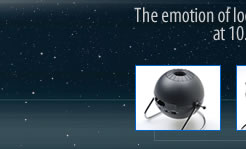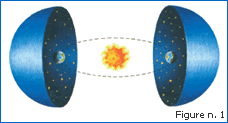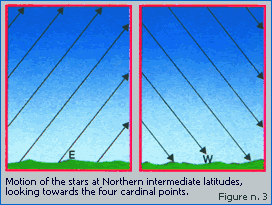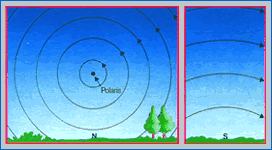 |
 |
 |
 |
|
 |
 |
 |
 |
 |
 The Earth rotates on its own axis,
but as we live on its surface we don't
actually notice this motion and we
get the impression that it is the stars
that move around us.
We can only see the Sun and the
Moon during the day. At night we can
see the stars. On a really clear night,
when there is no light pollution, we
are able to enjoy the breathtaking
view of the Milky Way which consists
in billions of stars of our galaxy. The Earth rotates on its own axis,
but as we live on its surface we don't
actually notice this motion and we
get the impression that it is the stars
that move around us.
We can only see the Sun and the
Moon during the day. At night we can
see the stars. On a really clear night,
when there is no light pollution, we
are able to enjoy the breathtaking
view of the Milky Way which consists
in billions of stars of our galaxy.Another spectacular vision that the night sky has to offer is when meteorites penetrate the earth's atmosphere. These are materials that orbit in space and due to friction with the surrounding air become incandescent and emit light. This means that the stars we can see in the sky at a specific time of the day, at a specific moment of the year, will be different from the ones we can see at the same time of the day, at a different moment of the year (fig. 1). - the North pole - an intermediate latitude location - the equator  The motion of stars in the sky The motion of stars in the sky Learning about the sky Learning about the sky Sky map Sky map
|
... These
are the so-called "circumpolar
stars" (fig. 3). Stars that are farther
from the celestial pole, however,
rise and set; or more precisely
during their motion they
spend a certain amount of time
below the horizon. The more distant a star is from the celestial pole, the more time it spends below the horizon. Beyond a certain limit, stars never rise as they are always located below the horizon. At the North Pole, all the stars in the visible half of the sky are circumpolar. On the contrary, no stars are circumpolar on the Equator.   |
Copyright © 2016 Selegiochi Srl (Vat number IT04538060155) All rights reserved - Powered Buy.it |